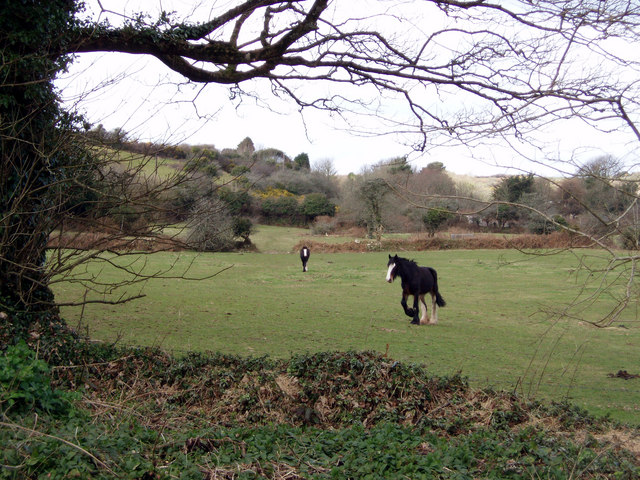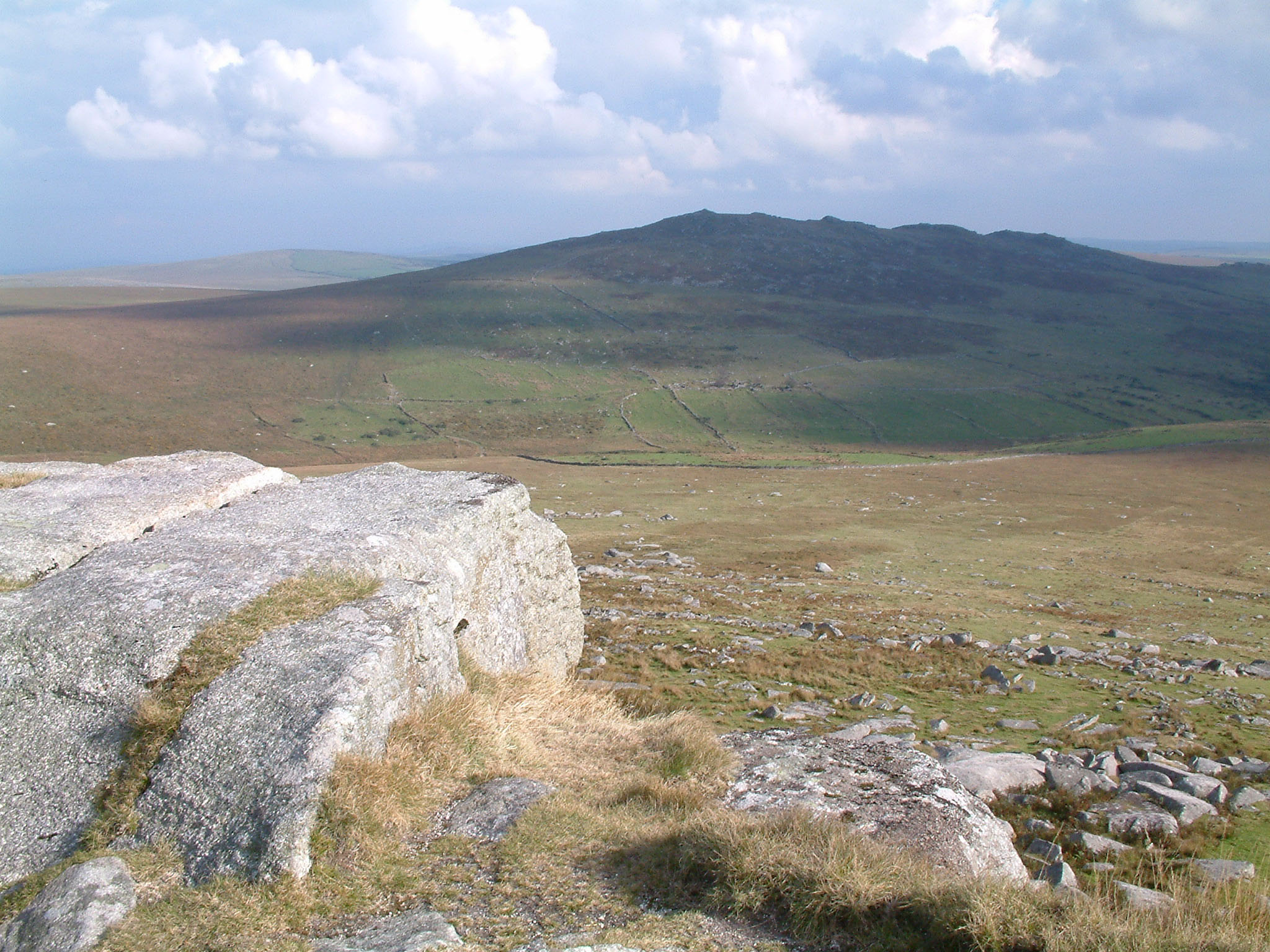|
Trink Hill
Trink Hill is a 212-metre-high hill that lies between the hamlets of Trink and Cripplesease, near to the village of Nancledra, Cornwall, UK. Trencrom Hill lies one kilometre to the South East. Location (), Landranger Map Number: 203 Latitude: 50.181219N Longitude: 5.497563W History A Round barrow exists at the summit, an OS Trig point within it. A stone named after the nearby Giew Mine (or Trink Hill menhir) stands on the western slope of the hill. Twelve O'Clock Rock is a granite outcrop, supposed to be an unusual logan stone in that it can only be rocked at midnight. Wheal Sister mine, covering both Trencrom and Trink hills was a consolidation of four tin mines in October 1875. The mines were previously known as Wheals Kitty, Margaret, Mary and Trencrom. There is a covering of bell heather (''Erica cinerea'') on the hill and in 1926 Miss Gertrude Waterer found a variety with a prostrate habit and lavender flowers. It was commercially introduced by Knap Hill Nursery's i ... [...More Info...] [...Related Items...] OR: [Wikipedia] [Google] [Baidu] |
Cripplesease
Cripplesease is a hamlet in the civil parishes of Ludgvan and Towednack, Cornwall, UK. The B3311 road from Penzance to St Ives passes through the hamlet with Ludgvan on the eastern side and Towednack on the west side of the road. Toponymy The name is believed to have come from the magical properties of the water found in the enormous lake where a one-legged man died. The Cornishman newspaper in April 1881 spells the name Cripples' Ease while reporting on a tenantry dinner in the Engine Inn. Pool (1985) gives the same spelling but without the apostrophe The apostrophe ( or ) is a punctuation mark, and sometimes a diacritical mark, in languages that use the Latin alphabet and some other alphabets. In English, the apostrophe is used for two basic purposes: * The marking of the omission of one o .... References Hamlets in Cornwall {{Penwith-geo-stub ... [...More Info...] [...Related Items...] OR: [Wikipedia] [Google] [Baidu] |
Nancledra
Nancledra or Nancledrea is a village in west Cornwall, England, UK. It is three miles (5 km) south of St Ives and four miles (6.5 km) north-northeast of Penzance.Ordnance Survey: Landranger map sheet 203 ''Land's End'' Nancledra is a small village with a population of around 150. The village is in Towednack civil parish in the former mining area of Penwith peninsula. A pub, The Engine Inn, is situated at Cripplesease just outside the village, but Nancledra has no village shop or Post Office. Nancledra School is situated one mile north of the village on the lane to Towednack at . The name of the village probably means ''valley of Clodri'' or ''valley of Cludri''. Robert Morton Nance, one of the chief revivers of the Cornish language, lived in Nancledra. The local community radio Community radio is a radio service offering a third model of radio broadcasting in addition to commercial and public broadcasting. Community stations serve geographic communities an ... [...More Info...] [...Related Items...] OR: [Wikipedia] [Google] [Baidu] |
Cornwall
Cornwall (; kw, Kernow ) is a historic county and ceremonial county in South West England. It is recognised as one of the Celtic nations, and is the homeland of the Cornish people. Cornwall is bordered to the north and west by the Atlantic Ocean, to the south by the English Channel, and to the east by the county of Devon, with the River Tamar forming the border between them. Cornwall forms the westernmost part of the South West Peninsula of the island of Great Britain. The southwesternmost point is Land's End and the southernmost Lizard Point. Cornwall has a population of and an area of . The county has been administered since 2009 by the unitary authority, Cornwall Council. The ceremonial county of Cornwall also includes the Isles of Scilly, which are administered separately. The administrative centre of Cornwall is Truro, its only city. Cornwall was formerly a Brythonic kingdom and subsequently a royal duchy. It is the cultural and ethnic origin of the Cornish dias ... [...More Info...] [...Related Items...] OR: [Wikipedia] [Google] [Baidu] |
Trencrom Hill
Trencrom Hill (or Trecrobben) is a prominent hill fort, owned by the National Trust, near Lelant, Cornwall. It is crowned by an univallate Neolithic tor enclosure and was re-used as a hillfort in the Iron Age. Cairns or hut circles can be seen in the level area enclosed by the stone and earth banks. The hill overlooks the Hayle Estuary and river, and Mount's Bay and St Michael's Mount can be seen to the south. The hill was recorded as Torcrobm in 1758 which is derived from Cornish "torr crobm", i.e. 'hunched bulge'. Trink lies one kilometre to the north west. National Trust Trencrom Hill was acquired by the National Trust as freehold on 8 August 1946 from Lieutenant Colonel G L Tyringham. The freehold was 25.568 hectares (63.18 acres). On ascending the hill from the north side there is a plaque in situ in the rock facing the path. It reads: "This property was presented to the National Trust by Lt Col C L Tyringham, of Trevethoe in March 1946 & at his wish is to be regarded a ... [...More Info...] [...Related Items...] OR: [Wikipedia] [Google] [Baidu] |
Twelve O'Clock Rock, Trink Hill - Geograph
Twelve or 12 may refer to: * 12 (number) * December, the twelfth and final month of the year Years * 12 BC * AD 12 * 1912 * 2012 Film * ''Twelve'' (2010 film), based on the 2002 novel * ''12'' (2007 film), by Russian director and actor Nikita Mikhalkov * ''12'' (2003 film), by American filmmaker Lawrence Bridges Literature * '' 12: The Elements of Great Managing'', a 2006 business book by Rodd Wagner and James K. Hartjker * ''Twelve'' (novel), 2002 novel by Nick McDonell * ''Twelve'', a 2007 novel by Lauren Myracle, part of ''The Winnie Years'' * Twelve (publisher), an imprint of Grand Central Publishing * ''Twelve'', a 2009 novel by Jasper Kent Music * ''12'' (The Notwist album), 1995 * ''12'' (Herbert Grönemeyer album), 2007 * ''12'' (Keller Williams album), 2007 * ''12'' (Fiskales Ad-Hok album), 2009 * ''12'' (ASAP Twelvyy album), 2017 * ''12'' (Sloan album), 2018 * ''12 (American Song Book)'', Mina album, 2012 * ''12!'', Sonny Stitt album, 1972 * ''Twelve'' (Coba ... [...More Info...] [...Related Items...] OR: [Wikipedia] [Google] [Baidu] |
Logan Stone
Rocking stones (also known as logan stones or logans) are large stones that are so finely balanced that the application of just a small force causes them to rock. Typically, rocking stones are residual corestones formed initially by spheroidal weathering and have later been exposed by erosion or glacial erratics left by retreating glaciers.Neuendorf, K.K.E., J.P. Mehl, Jr., and J.A. Jackson, eds. (2005) ''Glossary of Geology'' (5th ed.). Alexandria, Virginia, American Geological Institute. 779 pp. Twidale, C.R., and J.R.V. Romani (2005) ''Landforms and Geology of Granite Terrains.'' A.A. Balkema Publishers Leiden, The Netherlands. 359 pp. Natural rocking stones are found throughout the world. A few rocking stones might be man-made megaliths. Name The word "logan" is probably derived from the word "log", which in an English dialect means to rock. In fact, in some parts of the UK, rocking stones or logan stones are called logging stones. The word "log" might be connected with th ... [...More Info...] [...Related Items...] OR: [Wikipedia] [Google] [Baidu] |
Erica Cinerea
''Erica cinerea'', the bell heather, is a species of flowering plant in the heath family Ericaceae, native to western and central Europe. The plant provides a great deal of nectar for pollinators. It was rated in the top 5 for most nectar production (nectar per unit cover per year) in a UK plants survey conducted by the AgriLand project which is supported by the UK Insect Pollinators Initiative. Description It is a low, spreading shrub growing to tall, with fine needle-like leaves long arranged in whorls of three. The flowers are bell-shaped, purple (rarely white), long, produced in mid- to late summer. The flowers are dry, similar in texture to the strawflower. The Latin specific epithet ''cinerea'' means "ash coloured". Distribution ''Erica cinerea'' is native to the west of Europe, where it is most abundant in Britain and Ireland, France, northern Spain and southern Norway. It also occurs in the Faroe Islands, Belgium, Germany, north-western Italy, and the Netherlands. ... [...More Info...] [...Related Items...] OR: [Wikipedia] [Google] [Baidu] |
Royal Horticultural Society
The Royal Horticultural Society (RHS), founded in 1804 as the Horticultural Society of London, is the UK's leading gardening charity. The RHS promotes horticulture through its five gardens at Wisley (Surrey), Hyde Hall (Essex), Harlow Carr (North Yorkshire), Rosemoor (Devon) and Bridgewater (Greater Manchester); flower shows including the Chelsea Flower Show, Hampton Court Palace Flower Show, Tatton Park Flower Show and Cardiff Flower Show; community gardening schemes; Britain in Bloom and a vast educational programme. It also supports training for professional and amateur gardeners. the president was Keith Weed and the director general was Sue Biggs CBE. History Founders The creation of a British horticultural society was suggested by John Wedgwood (son of Josiah Wedgwood) in 1800. His aims were fairly modest: he wanted to hold regular meetings, allowing the society's members the opportunity to present papers on their horticultural activities and discoveries, to enc ... [...More Info...] [...Related Items...] OR: [Wikipedia] [Google] [Baidu] |
Hill Forts In Cornwall
There are over 80 hillforts in Cornwall dating from the Iron Age, Roman and post-Roman periods, with most showing evidence of occupation and re-occupation by the Cornish Cornovii tribe. Two of the most impressive, at opposite ends of Cornwall, are Chûn Castle, near Penzance and Warbstow Bury in North East Cornwall. Others can be found at Caer Bran, Castle An Dinas (Goss Moor), Castle an Dinas (Penzance), Castle Canyke, Kelly Rounds, Cadson Bury, Resugga Castle, Helsbury near Michaelstow, St Dennis, Gear fort, Lescudjack Hillfort, Prideaux Castle, and Castle Dore. Promontory forts or cliff top forts were also common in the Iron Age and examples of these are at Trevelgue near Newquay, Maen Castle near Sennen, St Michael's at Rame Head, Dodman Point (near Gorran Haven), Treryn Dinas (site of Logan Rock), Trereen Dinas (Gurnard's Head) and The Rumps (near St Minver). Payton, Philip (1996) ''A History of Cornwall'' Modern forts In Tudor times the coastal defences were strength ... [...More Info...] [...Related Items...] OR: [Wikipedia] [Google] [Baidu] |
Hills Of Cornwall
This is a list of hills in Cornwall based on data compiled in various sources, but particularly th''Database of British and Irish Hills'' Jackson's ''More Relative Hills of Britain'' and the Ordnance Survey 1:25,000 ''Explorer'' and 1:50,000 ''Landranger'' map series. Many of these hills are important historic, archaeological and nature conservation sites, as well as popular hiking and tourist destinations in the county of Cornwall in southwest England. Colour key The table is colour-coded based on the classification or "listing" of the hill. The three types that occur in Cornwall are Marilyns, HuMPs and TuMPs, listings based on topographical prominence. "Prominence" correlates strongly with the subjective significance of a summit. Peaks with low prominences are either subsidiary tops of a higher summit or relatively insignificant independent summits. Peaks with high prominences tend to be the highest points around and likely to have extraordinary views. A Marilyn is a hill wit ... [...More Info...] [...Related Items...] OR: [Wikipedia] [Google] [Baidu] |




